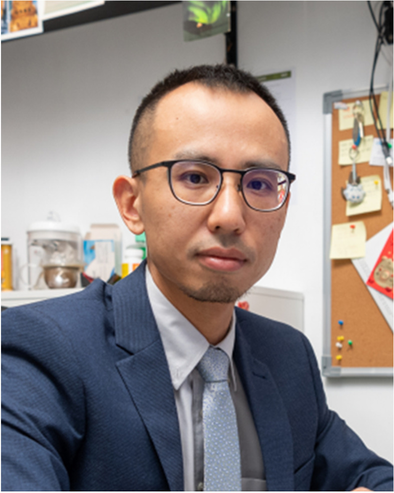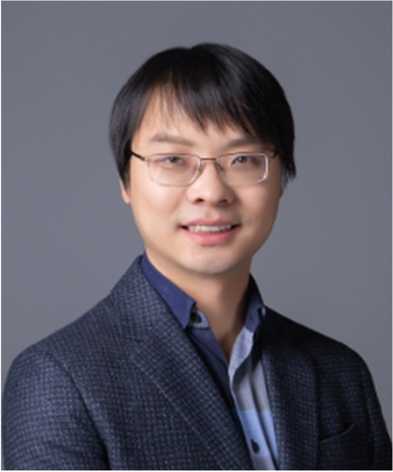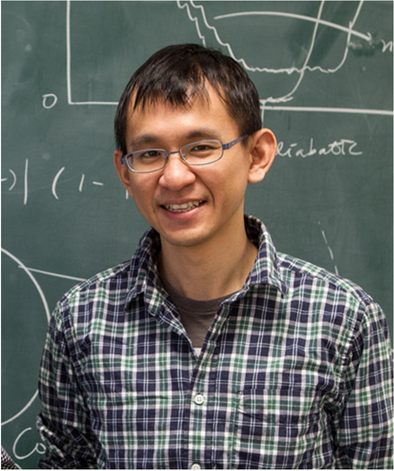Vol.32 (Oct) 2022 | Article no.32 2022
We are very pleased to announce the three outstanding young scholars who are receiving the 2022 AAPPS-APCTP C.N. Yang Award (C.N. Yang Award): Guancong Ma (Hong Kong Baptist University), Jianwei Wang (Peking University), and Meng-Ru Wu (Academia Sinica). This year, a total of 31 nominations were received; the nominees hailed from 11 different countries and their respective areas of research were represented in 10 distinct sessions of the Asia Pacific Physics Conference (APPC-15) (see Table 1). This year, 27 nominations were from AAPPS member societies and AAPPS divisions, while the remaining four nominations were individual nominations. All the nominees from the AAPPS member societies and AAPPS divisions and from the high-profile experts were excellent, making the selection process highly challenging.
| No. of candidates | |
|---|---|
| Nationality | |
| Japan | 8 |
| China/Beijing | 7 |
| Korea | 6 |
| India | 2 |
| Hong Kong | 2 |
| China/Taipei | 1 |
| Kazakhstan | 1 |
| Singapore | 1 |
| Vietnam | 1 |
| Poland | 1 |
| Canada | 1 |
| Total | 31 |
| Sessions (in APPC15-2022) | |
| A. Applied Physics | 1 |
| B. Astrophysics, Cosmology, and Gravitation | 6 |
| C. Atomic and Molecular Physics | 1 |
| E. Condensed Matter Physics | 9 |
| G. Nuclear Physics | 3 |
| I. Particles and Fields | 1 |
| K. Plasma Physics | 1 |
| L. Quantum Information | 3 |
| M. Semiconductor Physics | 4 |
| N. Statistical Physics | 2 |
| Total | 31 |
The C.N. Yang Award was established to honor and encourage young researchers with prominent research achievements and to promote the next generation’s leading scholars in physics in the Asia Pacific region. This award had been presented during the Asia Pacific Physics Conference (APPC), which has been held approximately every three years. Notably, starting in 2019, the Association of Asia Pacific Physical Societies (AAPPS) and the Asia Pacific Center for Theoretical Physics (APCTP) jointly established the AAPPS-APCTP Chen-Ning Yang Award (C.N. Yang Award) in order to make it an annual event. The C.N. Yang Award Committee consists of members from the AAPPS Council, AAPPS Divisions, and renowned scholars recommended by APCTP. This year, the awards will be presented at APPC15 (https://www.appc15.org/ ), which will be held in a hybrid format from August 21 to 26, 2022, in Seoul, Korea.
The selection process is a multi-step and highly challenging process, requiring careful and detailed evaluations at each stage. The originality of the candidates’ works, novelty and impact of their research, and their likely prospects were some of the important areas of consideration. The citations and the briefings for the C.N. Yang 2022 awardees are listed below.
Guancong Ma, Hong Kong Baptist University

“For his pioneering investigations of novel Hermitian and non-Hermitian topological phases in wave systems”
Dr. Guancong Ma obtained his PhD degree in 2012 from the Hong Kong University of Science and Technology and currently is an associate professor in the Department of Physics at Hong Kong Baptist University. Dr. Ma’s main research interests lie in the realms of topological physics, non-Hermitian physics in classical-wave platforms, and metamaterials. He studies topological physics using classical waves. His works have not only exemplified the universality of topology as a foundation in physics but have also vitalized the study of classical waves by bringing new tools for wave manipulations. For instance, his research opens a new frontier for topological physics by linking it to non-Hermitian systems — a new physical formalism that describes open systems. Singularities called “exceptional points” (EPs) can emerge in the parameter space of non-Hermitian systems. Dr. Ma was the first to experimentally realize higher-order exceptional points.
Dr. Ma pioneered and made continuous contributions to topological wave research. He played a key role in the first realization of a topological transition in sound and subsequently led a series of works that contributed to the vibrant development of topological acoustics. His work on topological physics contributed to the new realm of non-Abelian physics, which is a cornerstone of quantum-logic operations that are described by unitary matrices. He has also made impactful contributions to acoustic metamaterials, demonstrating the excellent sound-proofing capabilities of metamaterials. Dr. Ma later used absorptive metamaterials to break the focusing diffraction limit in three dimensions. Recently, he blurred the boundary between solids and fluids by first demonstrating fluid-like elasticity in a solid-based mechanical metamaterial and conversely realized transversality and spin-orbit interactions in a fluid-acoustic system.
Jianwei Wang, Peking University

“For his contribution in integrated photonic quantum information science and technologies”
Dr. Jianwei Wang is an assistant professor in the Physics School of Peking University. He received both a BS (2008) and MS degree (2011) in optical engineering at Zhejiang University (China) and then obtained his PhD (2016) in physics at the University of Bristol (UK). Dr. Wang is currently leading a group called the “Integrated Quantum Optics Lab” in the Physics School of Peking University. His research focuses on quantum information science and technologies with photons. He has developed large-scale integrated quantum photonic circuits and devices in silicon and has developed versatile technologies to understand quantum foundations and to explore applications of quantum information theory in communications, simulations, and computing. Dr. Wang realized the world’s first integrated optical quantum chip with over 500 components, which significantly pushed the development of the field. He has made significant contributions to on-chip generation, manipulation, and measurement of complex entanglement structures, including multiphoton entanglement and multidimensional entanglement. His team recently demonstrated the first topologically protected Einstein-Podolsky-Rosen entanglement sources, showing the possibilities of making robust quantum photonic devices. His group realized the first on-chip Gaussian sampling quantum computer that can be reprogrammed to implement quantum simulation of molecular dynamics. Dr. Wang realized the first photonic quantum simulator that can learn the Hamiltonian of quantum systems using hybrid quantum-classical algorithms. His group recently demonstrated the first programmable quantum processor with qudits and also on-chip implementation of eight-qubit cluster-state quantum computing and the benchmarking of error correction with photons stepping toward universal quantum computation. In addition, his group demonstrated the first chip-to-chip entanglement distribution and quantum teleportation, showing a pathway to a chip-based entanglement quantum network.
Meng-Ru Wu, Academia Sinica

“For his contributions in understanding the origin of heavy elements and in the theoretical development of collective neutrino flavor oscillations in neutron star mergers and in supernovae”
Dr. Meng-Ru Wu is currently an associate professor at the Institute of Physics, Academia Sinica, Taipei. To understand the origin of heavy elements is one of the open problems in physics and astrophysics. The multi-messenger observations of GW 170817 provide evidence for heavy elements being derived from the merger of neutron stars. Dr. Wu, with his collaborators, studied theoretical topics related to r-process nucleosynthesis and neutrino flavor conversions in mergers and supernovae. His work showed that r-process nucleosynthesis in outflows ejected viscously from post-merger black-hole accretion disk systems can robustly produce elemental abundance distributions that match well with what is inferred from the solar system and metal-poor star observations. For the theoretical modeling of kilonova lightcurves powered by the nuclear energy released from the decay of unstable nuclei made in the r-process, Dr. Wu and his collaborators found that the thermalization of particle species produced by different decay channels can largely affect the observable. He performed neutrino detection analysis and nucleosynthesis calculations to predict the elemental yields. For neutrino flavor conversions, he showed that neutron star merger remnants generally host favorable conditions for novel fast neutrino flavor conversions to occur within a length scale of centimeters.
Dr. Wu’s research work offers a new way to potentially understand the exact nucleosynthesis yields of very heavy nuclei with upcoming observations. In another important work, Dr. Wu showed old kilonova remnants residing inside our Milky Way can produce gamma-ray lines from the decay of a few long-lived r-process nuclei, which may be detectable by next-generation gamma-ray telescopes and could yield clues to key questions related to the merger r-process and the property of neutron star binaries.
The author read and approved the final manuscript.
The authors declare that they have no competing interests.
Springer Nature remains neutral with regard to jurisdictional claims in published maps and institutional affiliations.
If you'd like to subscribe to the AAPPS Bulletin newsletter,
enter your email below.